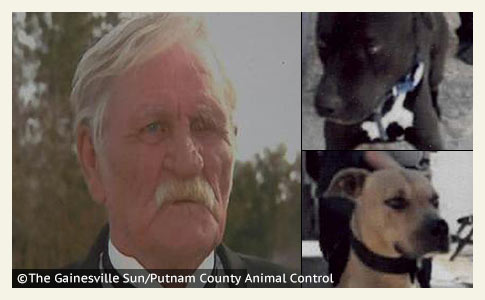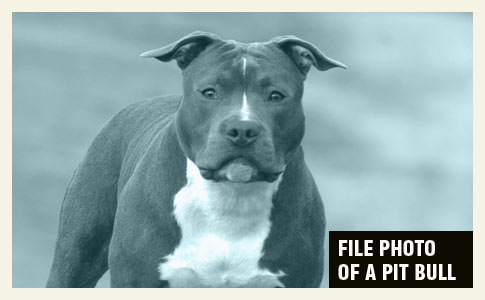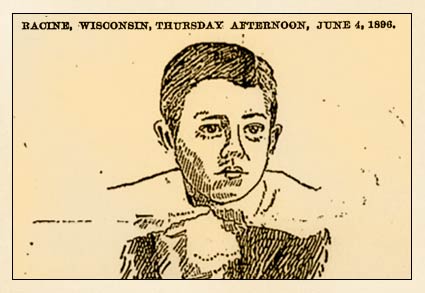Attack Date: June 17, 2007
DogsBite.org - It's not easy to write about your own violent dog attack. Who could know this better than I do, the voice of DogsBite.org? Usually, I write in third person, but not today. Four years ago today, an event forever altered my life, including all of the environments, activities and personal and business relationships within it. The event was an unprovoked assault by a leashed pit bull on a public street. At the time, I was just a few blocks away from my home.
I've chosen to share several passages from a piece that I wrote in the summer of 2009 on behalf of my dog bite claim. It was the hardest material I have ever had to write. Not only did it require that I relive every moment of the attack, but that I relive the many painful experiences that occurred in the weeks, months and years following it. Most dog bite victims must complete a similar claim document, assuming that a path of civil recourse is available to them.
My attorney, Paul Ayan of Ayan Law Office, hinted for weeks at my necessity to complete the piece. Still though, I put it off as long as possible. Then one day, it erupted onto 18 pages. My core themes included the loss of identity and trust. In one section I write, "It struck me that I will never be able to reach the former Colleen, she will always be just beyond my reach and at times, turning to peer at me." Other dog bite victims have shared similar reflections with me.
We all miss the person we were prior to the attack.1
The trauma of a violent dog attack, along with the subsequent minimization of it by social forces, forever removes parts of a person. These missing parts are often aspects of an individual's identity and trust systems. The process of rebuilding them takes time. Four years later, I think I am about half way there. A settlement agreement was reached shortly after I completed the claim document. I share some of its portions with DogsBite readers today.
Portions of the Claim Document
On June 17, 2007, I was attacked by a leashed pit bull named "Bull." At the time, I had been jogging down 15th Avenue in my Beacon Hill neighborhood. The day of the attack is Father's Day. My father was not a happy father on this day. My Birthday is June 16th. Do you know how many times you are asked your Birthday while being treated in a trauma facility? About a dozen times per hour if not more. Each time I was asked this question, the emergency worker said, "Happy Birthday!"
There are two phrases I hope to never hear again, one, "Happy Birthday," and the other, "Are you right handed?"
* * *On March 2, 2009, I moved over 1,000 miles away from the City of Seattle. The day I drove into this tiny town (population 8,000), its newspaper reported that a pit bull had attacked and killed a goat. In May of 2009, two pit bulls severely mauled a woman who had gone to visit a friend's home. A deputy shot one of the pit bulls, but the bullet bounced off the dog's head. The attack occurred on Road 29, I live on Road 23. Earlier that same day, I had ridden my bike out to Road 28. This was the second outing I had taken on a bike since the attack, the first being the day before. Why I thought a country road would be safe from a pit bull is beyond me.
There is no escaping the pit bull problem.
* * *By June 17, the day of the attack, my life was truly at an illuminating peak. I had developed a massive commitment to social activism and was about to meet for the first time, a favorite person who I had been closely corresponding with for months. There was the added urgency that I may not meet Jonathan as well. For each day, while traveling the deadly Iraqi roads, he stood the risk of being maimed or killed and forever lost to me.
As I wrote earlier, by the time we do meet, I am a different Colleen. We do spend two weeks together, but I am in frozen "shock" so to speak from the attack. It will be after Jonathan leaves in early September that I am finally confronted by the reality of the attack. Once confronted, I realize that I must start DogsBite.org.
* * *This is the same realization I have while being attacked by the pit bull. I believe I am being "eaten" by the jaws of a large wild animal. It was not a dog clamped onto my arm, dragging me across the cement; it was an untamed, ferocious beast and I was its prey. Just inches from my face, I could see my forearm inside the jaws of the pit bull. Its teeth were coming in and out of my skin as he chomped and shook his jaws, like he was trying to tear off a hunk of meat, stubbornly attached to bone.
After I manage to escape and sprint down the street, I hold that part of my arm with my left hand tightly. I scream, "CALL 911!" repeatedly, and as loudly as possible, so that every person living on the block will come outside. I see one man running toward me, he is saying something as I continue to shout, "CALL 911!"
"I am an ER doctor," He said. "It's okay, I am an ER doctor."
He approaches me with his hands out in front of him, like the gesture, "I am not going to hurt you."
"I need to see your arm," He said. "You need to let go of your arm so that I can examine it."
"NO!" I shout at him. "NOOOOOOOO!"
At this time, I am terrified of releasing my hand that is covering the wound. I fear that I will see bones and ligaments popping out. Worse, I fear that the ONLY thing that is keeping my right forearm connected to my body is my left hand. To let go would force me to see that the dog had actually bitten my arm into two pieces.
* * *On August 21, the terrifying attack on Sue Gorman occurs in a neighboring county. The woman had been sleeping in her own bed when two pit bulls snuck into her home and attacked her and her two dogs. This horrifying attack rocked the Puget Sound and left me nearly fully debilitated for three days. This is the first time that I will wholly relive my attack and all of the emotions that come with it. At this time, DogsBite.org is still several months away from launching. After it does launch, I will have several other experiences that match this one.
* * *Within days of launching DogsBite.org, pit bull lobbying groups (some of which I believe are fronts for dogfighters and breeders of fighting dogs) had me pegged. These groups immediately threatened me with lawsuits. They turned my name into the FBI as a domestic terrorist as well. The onslaught of destroying Colleen's personal and professional reputation began. In fact, it was due to one of these groups that my identity as the author of DogsBite.org was exposed at all. An attorney who worked for one of these lobbying groups wrote to me as a personal injury lawyer asking, "Who is behind this website?" I fired back:
"Given that you are a personal injury lawyer, we presume you are on the side of the victim?
Given that we receive death threats and mountains of hate mail, you can understand why we do not place our names on this website -- each of us after all are victims of dog attacks.
Victims once, not victims twice, particularly from zealous, hate mongering pit bull advocates.
We get lots of emails like yours as well. Emails that appear legitimate but are in fact not."
After I wrote this, I verified that his law firm was real through Google searches. At that time, I was desperate for help, trusted that he was a victim's advocate and felt remorse about my initial reply. I wrote him back and apologized and also provided him with my personal and business contact information. He did not write back.
Two days later, most of the information from that email was cross-posted to many pit bull forum boards. Prior to my telling this attorney my real name on January 15, 2008, no one knew who was behind DogsBite.org except close friends.
Sure enough, after doing deeper Google searches, I learned that he was an attorney for one the most aggressive pit bull lobbying groups of all.2
* * *After reading this document, now you know why there was no website prior to DogsBite.org. The harassment factor is too high. Victims give up and move on. In my case though, the harassment made building out the website even more important. Owners of aggressive dogs and lobbying groups for these breeds have been harassing victims of attacks for decades. Someone needs to stand up for these victims. That someone is me, through the website DogsBite.org.
I did not ask for this job. But once exposed to these injustices, I also could not turn away. When you get emails like the below, how could anyone turn away?
"Each time I receive your emails I am amazed at how clearly you are able to communicate the reality of the problem Pit Bulls are in our society. I really believe that you have been chosen by God to bring this problem to light and make a difference..."
For the purposes of this blog post, one segment of the claim document was slightly modified for clarification. Names of persons and organizations were also changed and/or removed. Originally published, June 17, 2011.
1No amount of money can ever compensate a person for this "loss of self."
2I submitted a formal complaint to the State Bar of Texas about this attorney. The Bar quickly denied it.
Related articles:
05/08/11: Announcement: DogsBite.org Receives 501 (c)(3) Tax-Exempt Status
05/01/11: Announcement: Dog Bite Attorney Directory is Open for Submissions
01/23/10: Announcement: Wishes for the New Year from DogsBite.org






